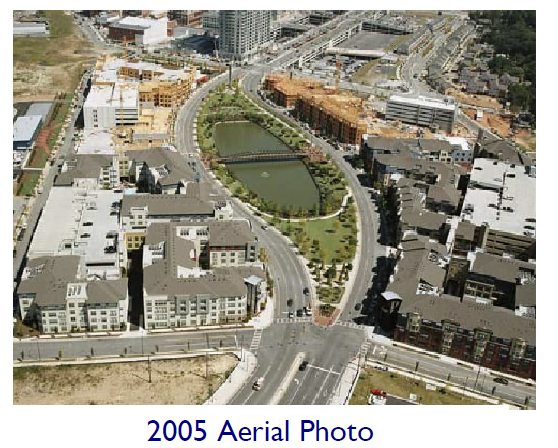

In many cases brownfields are the ecological remains of an abandoned industrial effort. They can be small scale (e.g. the case of a neighborhood gas station) or large scale (e.g. where a large scale factory once stood.
Large scale urban redevelopment efforts can sometimes turn what will be abandoned factory land into high density living. This is very expensive but can be done, as in the case of Atlanta:



Baltimore MD

So the issue now becomes, how to best make a brownfield, GREEN?
A simple idea, but one that has not yet been implemented (but certainly would fit the
intent of the new stimulus package), is to put PV panels on these abandon urban tracts.
One of the principal advantages to this lies in ready access to grid infrastructure in
many of these locations as large factories once stood there.
Currently brownfields are producing new value to any city so why not just cover them with
PV cells?
Google Earth Exercise:
PVs in Urban Brownfields.
Brown fields are former industrial wastelands that now exist as barren/toxic soil repositories.
We will examine and measure some brownfield PV potential in the Urban Areas.
Download the worksheet for this
exercise
Procedure:
Below are two examples of the kinds of things your looking for and how they would appear
in Google Earth (basically there are no buildings on the land and it would be located in
a generally industrialized area).
Example 1: 39 55 29 -75 12 20 (this is very large scale)
Example 2: 34 1 17 -118 13 40 (more typical scale)
Also feel free to use Eugene as it has a couple of good candidates -
see if you can find them.
For reference:
In the summer, at any Urban Location in the US, about 1 square KM of PV will produce 100
Mega Watts of electrical power
 so this is potentially a big deal.
so this is potentially a big deal.